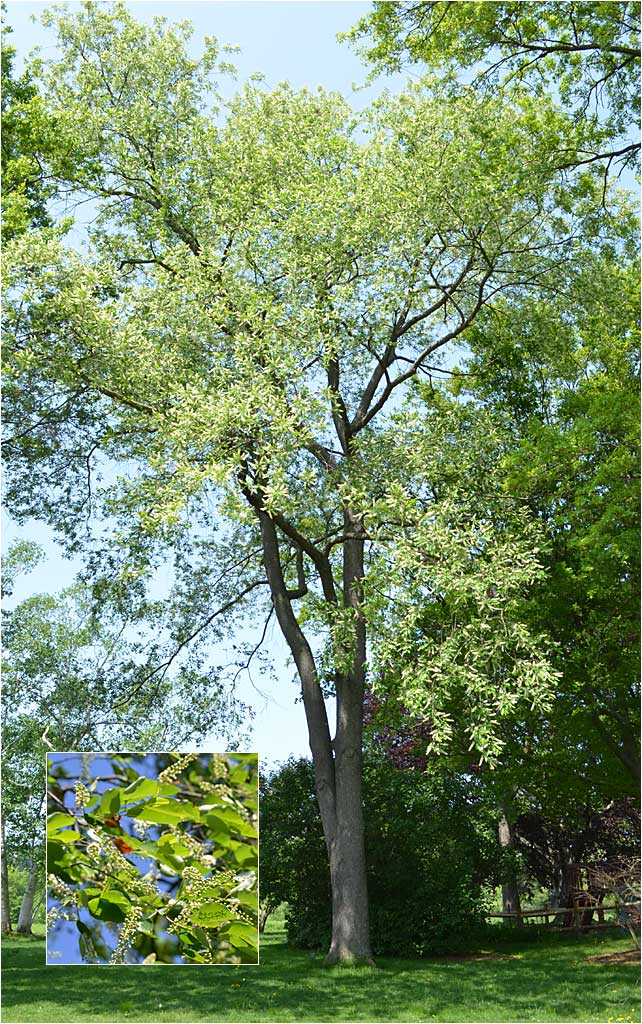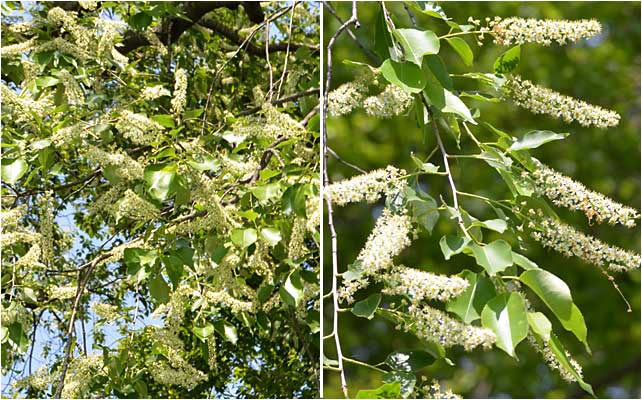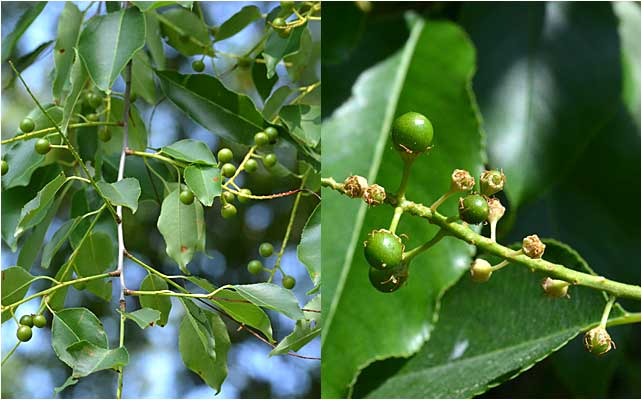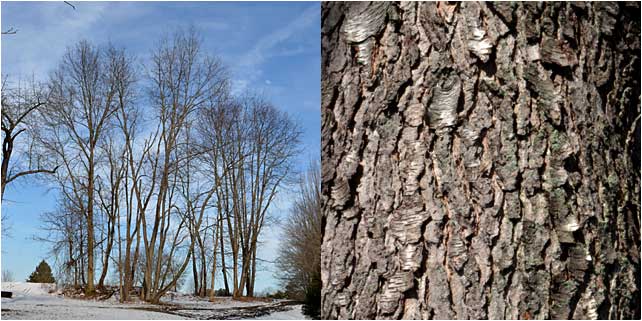10. BLACK CHERRY, Prunus serotina
CT Notable Tree

The story of Westmoor's oldest Black Cherry tree starts in winter as the tree begins to emerge from dormancy. The root structure is already busy producing nutrients to fuel tremendous growth in just a month or two. The tree's size and age make it a CT Notable Tree.
EARLY SPRING, THE FIRST SIGNS

A few tentative leaves break free of their buds, and small floral buds (the green stalks) have broken open. These stalks will become the raceme - the structure that supports the flowers. This happens quickly, just a week or so, but is quite striking to behold.
FLOWERS STARTING

While the tree appears alive with flowers, at this stage of the season it is the racemes and early leaves that give the tree its signature early Spring appearance. You can see the racemes in the inset photo; each of the small circular pods will soon produce a flower.
SPRING FLOWERS

The tree magically changes from light green to a riot of green and white - dominated by the spectacular white flowers on long, swaying stalks.
EARLY FRUIT

As the brilliant white flowers fade, tiny green fruit begins to appear on the same racemes that held the flowers in place. As there are a number of Black Cherry trees at Westmoor, and every tree is monecious (M/F flowers on the same tree), most trees are pollinated and produce a fair amount of fruit. In some years, impressively so.
SUMMER FRUIT

2023 was a banner year for fruit production for the Westmoor Black Cherry. During the course of the summer the fruit matures and ultimately turns a very dark blue. A variety of birds and wildlife consume the cherries - which are edible (and sweet). The genus Prunus (cherry trees) are among the top native species of trees (like Oaks) in supporting a host of wildlife. (Douglas Tallamy, book: Bringing Nature Home)
MATURE FRUIT

The small ripe fruit of our native Black Cherry tree at The Westmore Arboretum. A multitude of birds, mammals, and insects rely on the tree for sustenance. Birds, for example, may feed their young the caterpillars that snack on the leaves. The food web for native trees is large and complex. Sadly, the majority of cherry trees planted in the U.S. are not native cherries - but imported, grafted trees. Fine for ornamental purposes but not nearly as beneficial to our environment.
NATIVE BLACK CHERRIES

There are a number of naturally occurring stands of Black Cherry around the grounds of The Westmoor Arboretum. The dark bark is quite distinctive. Once you see the unique, upturned edges of the bark you can recognize these trees anywhere.
THE KEYSTONE CORNER

At The Westmoor Arboretum, this section is called The Keystone Corner because it contains three "keystone" species of mature native trees - all in a row. Keystone species provide native habitat for hundreds of organisms including fungi, insects, birds, and mammals. Oaks (Red & Pin here) are the #1 keystone tree species and Black Cherry is #2. (Douglas Tallamy, book: Bringing Nature Home)